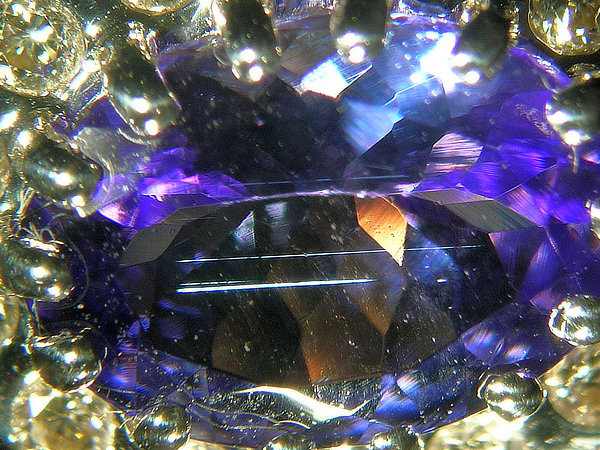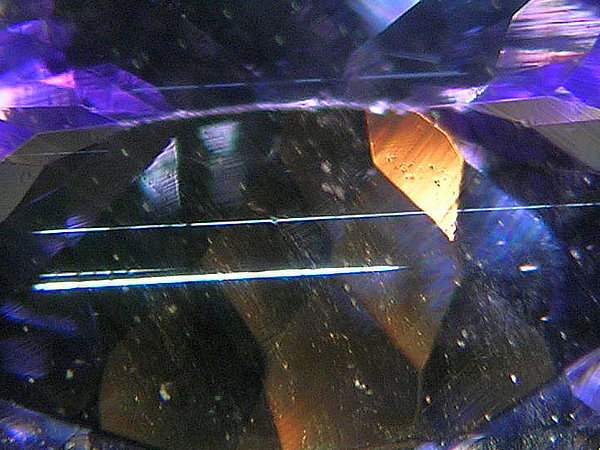
AboveThis gem shows how the colour varies between blue and violet. The golden gleam in one facet is a reflection from
the gold mount. Inclusions like this are
quite rare in tanzanite. They are probably growth tubes, and would have
contained liquid as the gemstone formed.
Looking at the picture
the inclusions are very noticeable. In reality they're almost invisible, I
had to arrange the lighting to highlight them.
Click here
for a larger image
Below: Detail of the
inclusions, the best I could achieve with our equipment. The broad rough
line near the top is an edge between facets on the back of the stone, rather out
of focus. The other horizontal and parallel lines are the tube-like inclusions. This stone showed some damage by chipping to facets at the back, not visible to the naked eye.

Tanzanite
A splendid clear stone. It
is mainly blue, but parts of the stone will also look violet, it depends on the angle of the light hitting the crystal.
Treatments before purchase
Almost all tanzanite is heat-treated, when first mined
it's a muddy brown colour. The treatment is permanent.
Only a few
pieces need no treatment, these are even more attractive if you are ever lucky
enough to see one (I never have).
Inclusions and fractures are rare, so fracture filling is
very unlikely. However we have seen reports that some colour enhanced stones are
appearing. As yet there is insufficient information to give any further
guidance.
It's not a treatment, but you must be aware that
some stores are selling tanzanite coloured CZ, so read descriptions
carefully. If the stone's name is
not spelt exactly as shown here,
it's almost certain to be a trademark for blue CZ.
Caring for Tanzanite
The stones are comparatively soft, and will be scratched
by household dust. Do not wear when doing manual work (including
housework).
They can be soaked in lukewarm water to clean them, but should
not be soaked in Silver Dip.
Treat with care, and enjoy these beautiful stones for many years. They look splendid,
especially when seen with diamonds, and are
ideal for special occasions.


